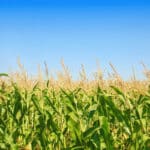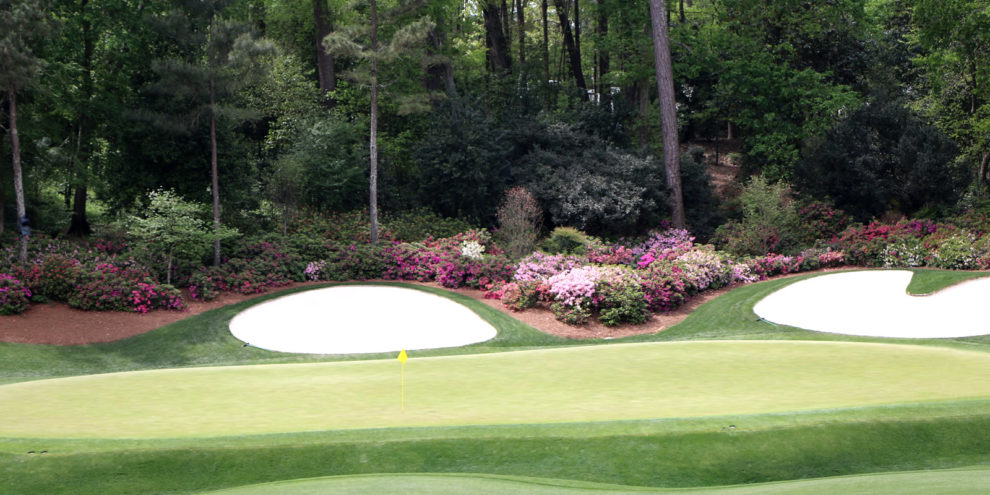Spring, in all its majesty, has arrived in the South along with the most highly anticipated golf tournament of the year, The Masters. The Masters Tournament, held in Augusta, Georgia, is one of the four major championships in men’s professional golf. While most of us haven’t had the privilege of walking the grounds, we can appreciate its beauty and explosion of color on television. The land that became Augusta National Golf Course holds a storied past. The natural beauty of the course’s eighteen holes was born from the expertise and land stewardship of the owners of a nursery, not golf course architects.
Postponed last year until November because of the COVID-19 pandemic, the hype surrounding the tournament this year has reached a fever pitch. The Masters is back to being that annual rite of spring devoted to the brilliance of dogwoods, blooming azaleas and lush green fairways. With the 2021 Masters beginning this week, let’s look at the history of the land that became the green and glorious venue we know as Augusta National Golf Club.
Augusta National Golf Club and Masters Tournament is the result of a grand vision of Bobby Jones, a gentleman amateur golfer, and Clifford Roberts, an astute investment banker in New York. But it was the land stewardship, conservation, and protection of the natural environment by Louis Mathieu Eduoard Berckmans and his son Prosper Jules Alphonse Berckmans, that prompted Jones and Roberts to select the 365 acre tract that would eventually become the world’s most famous golf course.
After immigrating to the United States from Belgium in 1851, Berckmans and his son settled in Plainfield, New Jersey, but moved to Augusta in 1857 to escape the cold winter weather of the North. They purchased an indigo plantation and established Fruitland Nurseries as one of the South’s finest horticultural concerns, importing many different types of trees and plants from other countries. Business operations ceased a few years after Prosper’s death in 1910, but the legacy of Fruitland Nursery affected horticulture throughout much of the world. Many of the flowering plants that bloom at Augusta National during Masters week are descended from Berckmans stock.
After he won the Grand Slam in 1930, Bobby Jones retired from competitive golf. Jones, who was also a lawyer by profession, placed focus on his law practice in Atlanta. He still enjoyed teeing up for a casual game with friends, but was unhappy with attention he garnered from spectators. He set out to create his own personal golf club, a dream course that would also elicit peace and solitude, and he enlisted the help of his friend Clifford Roberts.
In 1931 the two formed a partnership to build the Augusta National Golf Club in Augusta, Georgia. They visited the old Fruitland property that same year, and Jones knew instantly it was the land where he wanted to build his club. Overlooked by a 14-room manor house – the first building in the South constructed from a material that came to be known as concrete – Jones felt that the property naturally lent itself to use as a golf course. Jones and Roberts bought the old nursery for $70,000.
Jones wrote later: “The long lane of magnolias through which we approached was beautiful. The old manor house with its cupola and walls of masonry two feet thick was charming. The rare trees and shrubs of the old nursery were enchanting. But when I walked out on the grass terrace under the big trees behind the house and looked down over the property, the experience was unforgettable. It seemed that this land had been lying here for years waiting for someone to lay a golf course upon it. The broad expanse of the main body of the property lay at my feet then just as it does now. It looked as though it were already a golf course.”
Jones and Roberts decided to hold an annual event beginning in 1934, the Augusta National Invitation Tournament. It wasn’t until 1939 that the name was officially changed to the Masters Tournament. The inaugural tournament was held March 22, 1934, and beginning in 1940, the Masters was scheduled each year during the first full week in April.
Roberts and Jones invited Louis Alphonse Berckmans, son of Prosper Berckmans, to Augusta during the construction of the course to help them decide where plant varieties would be located on each hole. Famously, each of the holes at Augusta National are named for a tree, bush, shrub or flower found on the course. The fourth hole, one of the toughest on the course, is called Flowering Peach. The fifth is named Magnolia. The 11th, 12th, and 13th holes, nicknamed “Amen Corner”, are White Dogwood, Golden Bell, and Azalea, respectively. Over the years, more than 80,000 plants encompassing over 350 varieties have been added to the grounds.
Stands of long-needle pines, dogwoods and azaleas are the most identifiable plantings on the course. The course’s beloved azaleas consist of more than 30 varieties. The story of the Eisenhower Tree has become part of Augusta National lore. The loblolly pine, estimated to be 100 to 125 years old, used to jut out onto the 17th fairway and tormented former President Dwight D. Eisenhower, a member at Augusta National. He was always hitting his drive into the tree. Until his death, he lobbied to have it taken down. Clifford Roberts, the sitting chairman, ruled that it stay put until the tree suffered extensive damage from a major ice storm and had to be removed in February 2014.
Since the inaugural event, the only Aprils without the Masters was during World War 2 and in 2020, when it pushed back until November because of the coronavirus pandemic. From 1943 until late 1944, Augusta National was closed for play and transformed into a farm to help support the war effort (you’ve probably seen the picture of the cows on the grass in front of the famous clubhouse). Many of golf’s early legends joined the war efforts including Bobby Jones. No one was playing golf, so Augusta National was closed for play and cows and turkeys were purchased and allowed to roam the fairways. Between 1943 and 1945, the club’s greenskeeper raised some 200 cattle and more than 1,400 turkeys at Augusta. Some of the turkeys were given to club members for Christmas (meat rations were in effect) while the rest were sold to local residents to help fund maintenance as Augusta hit financial difficulty. Turkey profits were crucial since the plan to sell beef cattle for a profit had not panned out. The club waived annual dues, but members were also asked to donate $100 a year to cover minimal maintenance expenses and keep Augusta afloat. Bobby Jones thought the cows would keep the grass trimmed, but instead did a fair amount of damage eating a large quantity of plants, including the signature azaleas, and the bark off the trees. When they sold their steers, wartime prices were low and they incurred a $5,000 loss.
The war came to an end in 1945 and Augusta National decided that it was time to reopen. The course needed major repairs and renovations, so 42 German prisoners of war, part of Rommel’s army and captured in North Africa, were shuttled back and forth to work to help restore the course to its former beauty. They also built bridges and other amenities that line the course today.
Good conservation of lands necessitates good stewardship. Making sure that the native plant and animal communities found in your area continue to live is a priority to ensure its health and vitality for the future. This article demonstrates how the land management and selections of one family back in 1857, made Augusta National the beautiful course that it is today.
Augusta National keeps the name of the Berckmans family alive as a reminder of their remarkable legacy of beauty there and in landscapes throughout the world. Their family legacy lives in the named holes and the large magnolias that line Magnolia Lane, planted as seeds when they bought Fruitland. Likewise, at the base of the flag in front of the clubhouse, Founders Circle honors the club’s founders Clifford Roberts and Bobby Jones.
This content may not be used or reproduced in any manner whatsoever, in part or in whole, without written permission of LANDTHINK. Use of this content without permission is a violation of federal copyright law. The articles, posts, comments, opinions and information provided by LANDTHINK are for informational and research purposes only and DOES NOT substitute or coincide with the advice of an attorney, accountant, real estate broker or any other licensed real estate professional. LANDTHINK strongly advises visitors and readers to seek their own professional guidance and advice related to buying, investing in or selling real estate.







Add Comment